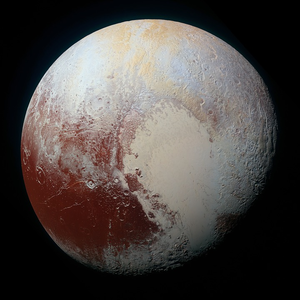Difference between revisions of "Dwarf Planet"
(→Key Stage 4) |
|||
| Line 20: | Line 20: | ||
==Key Stage 4== | ==Key Stage 4== | ||
===Meaning=== | ===Meaning=== | ||
| − | A [[Dwarf Planet]] is a large lump of [[rock]] [[Orbit|orbiting]] a [[star]] that has enough [[gravity]] to | + | A [[Dwarf Planet]] is a large lump of [[rock]] [[Orbit|orbiting]] a [[star]] that has enough [[gravity]] to become a [[sphere]], but not enough to have cleared its [[orbit]] of other [[object]]s. |
===About Dwarf Planets=== | ===About Dwarf Planets=== | ||
Revision as of 20:03, 12 March 2019
Contents
Key Stage 3
Meaning
A Dwarf Planet is a large lump of rock orbiting a star that has enough gravity to be round, but not enough to have cleared its orbit of other objects.
About Dwarf Planets
- There are several known dwarf planets in our Solar System. However, there may be many other dwarf planets that are too far away from The Sun to be seen.
Examples
| Ceres | Pluto |
| Ceres is a Dwarf Planet found in the Asteroid Belt. | Pluto is a Dwarf Planet found beyond the orbit of Neptune. |
Key Stage 4
Meaning
A Dwarf Planet is a large lump of rock orbiting a star that has enough gravity to become a sphere, but not enough to have cleared its orbit of other objects.
About Dwarf Planets
- There are several known dwarf planets in our Solar System. However, there may be many other dwarf planets that are too far away from The Sun to be seen.
Examples
| Ceres | Pluto |
| Ceres is a Dwarf Planet found in the Asteroid Belt. | Pluto is a Dwarf Planet found beyond the orbit of Neptune. |

